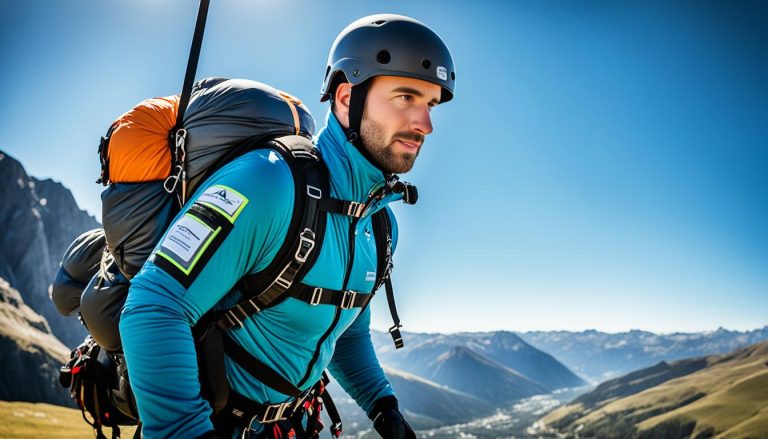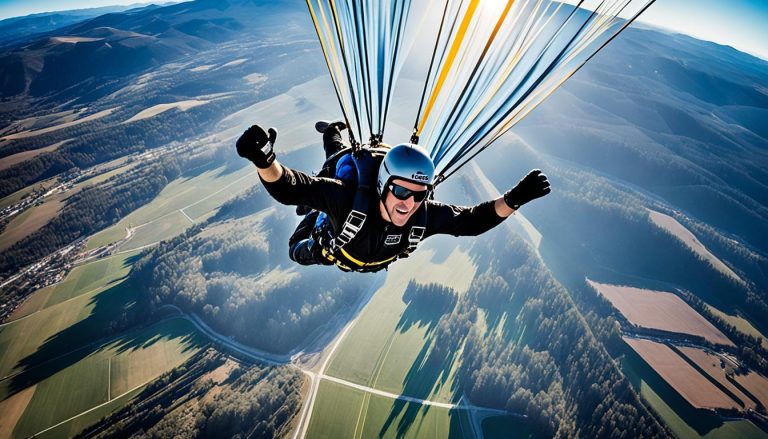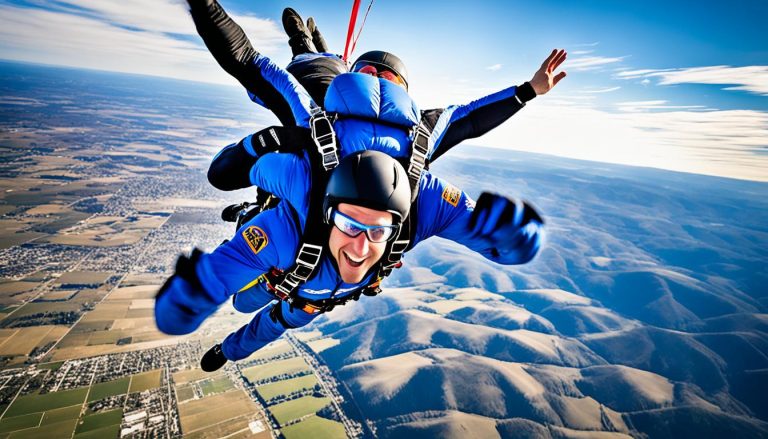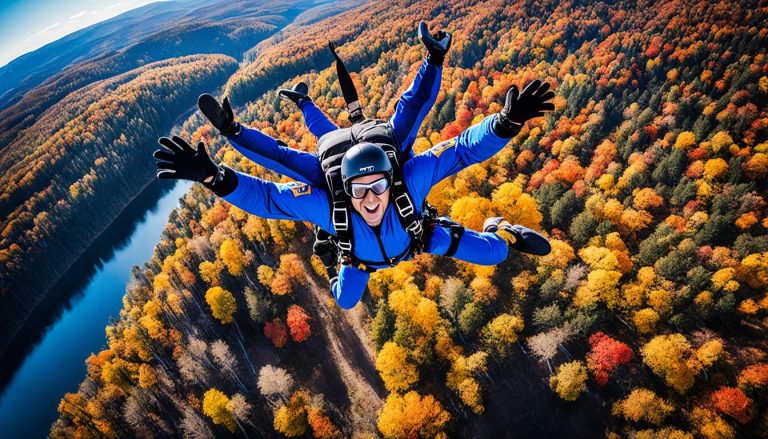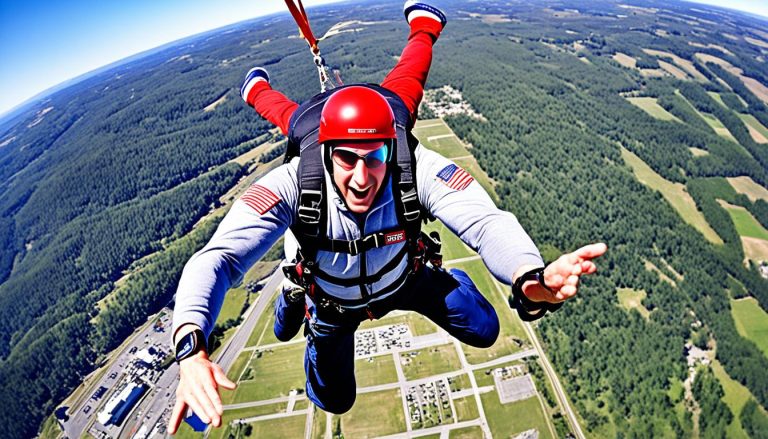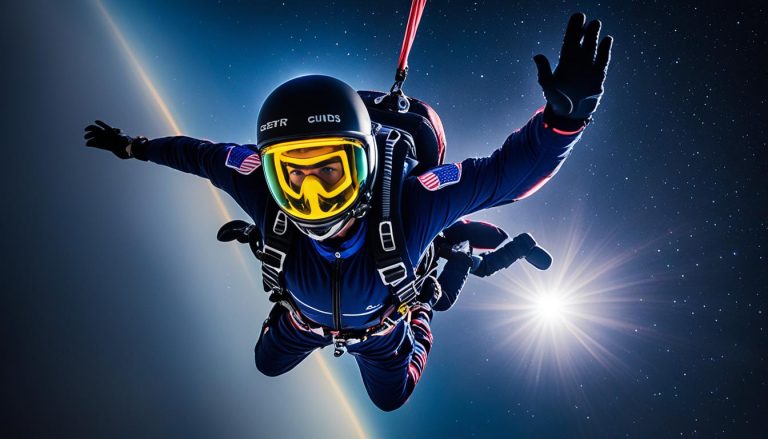Techniques to Perfect Your Parachute Drop
Mastering the art of parachute drops requires a combination of skill, knowledge, and strategy. Whether you are a seasoned skydiver or a newcomer to the sport, understanding the techniques to perfect your parachute drop is crucial for a safe and exhilarating experience. In this article, we will explore valuable tips and strategies that can help you enhance your parachute landing and maximize control during the descent.
First and foremost, optimizing your parachute’s design and shape is essential for a successful drop. By manipulating the size, weight, and shape of the parachute, you can control the forces of flight and achieve a slow and controlled descent. Experimenting with different designs, such as cutting unique shapes from lightweight materials, can provide insights into the most effective parachute design for your needs.
Additionally, mastering the parachute landing fall (PLF) technique is crucial for safe and controlled landings. The PLF technique involves rolling your body in a specific sequence, distributing the impact and protecting vulnerable areas. By practicing this technique, skydivers can minimize the risk of injury and ensure a smooth and controlled landing.
Furthermore, understanding the principles of aerodynamics and air resistance is vital for optimizing parachute performance. Manipulating the parachute’s design and shape can influence the amount of air resistance generated, allowing you to control the speed and maneuverability during your descent. By experimenting with different variables, skydivers can find the perfect balance between air resistance and control.
In conclusion, perfecting your parachute drop techniques requires a combination of careful design considerations, mastering landing techniques, and continuous experimentation to optimize performance. By implementing these techniques and strategies, you can enhance your control, precision, and safety during parachute drops, ensuring a thrilling and memorable skydiving experience.
Stay tuned for the next sections where we will delve deeper into specific techniques and strategies for parachute landing, design considerations, and advanced maneuvers.
Parachute Landing Fall Technique
The Parachute Landing Fall (PLF) technique is a crucial skill in skydiving, especially in uncertain landing situations. Originally developed for traditional round parachutes, the PLF remains a valuable safety measure today. During a PLF, skydivers execute a controlled roll to distribute the impact evenly and protect vulnerable body parts. The technique involves a sequential landing approach, starting from the balls of the feet, followed by contact with the side of the calf, upper leg, hip/butt, and finally the side of the back. Maintaining coordination, softness, and a controlled posture is essential to absorb the impact without tension while preserving the ability to maneuver the parachute.
Mastering aerial maneuvering skills, such as the PLF technique, allows skydivers to land safely and confidently, reducing the risk of injury during parachute descent. By practicing precision skydiving techniques like the PLF, individuals can enhance their control, protect their body from impact-related injuries, and effectively navigate varied landing conditions.
Table: Common PLF Landing Sequence
| Landing Sequence | Body Part |
|---|---|
| First | Balls of the feet |
| Second | Side of the calf |
| Third | Upper leg |
| Fourth | Hip/butt |
| Fifth | Side of the back |
Parachute Design and Shapes
Parachutes come in various designs and shapes, each with its own unique features and capabilities. However, they all share a common set of essential elements, including a canopy, ropes, and rigging for payload attachment. Experimenting with different designs allows skydivers to determine the most effective parachute design for their specific needs.
The canopy, typically made from lightweight materials, is a critical component of a parachute. It can be cut into various shapes and sizes to achieve desired performance characteristics. By adjusting the shape and size of the canopy, skydivers can control the descent speed and stability of the parachute during freefall and landing.
In addition to shape and size, the number of strings attached to the canopy can be modified to enhance control and maneuverability. More strings can provide better stability, while fewer strings can increase agility. Skydivers can experiment with different string configurations based on their desired parachute behavior.
Another modification that can be made to the canopy is the addition of small holes. These holes, strategically placed, allow air to pass through the canopy, altering its aerodynamic properties and influencing its descent. By adjusting the location and size of these holes, skydivers can fine-tune the performance of the parachute.
To further explore the effectiveness of different designs, skydivers can drop the parachute from different heights and observe its descent. This experimentation provides valuable insights into how weight, shape, and size affect the performance of the parachute, allowing skydivers to optimize their design choices.
Moreover, attaching a container or payload to the strings of the parachute can introduce an additional variable that alters its performance. The added weight can affect the descent speed, stability, and maneuverability of the parachute. Skydivers can explore different payload configurations to determine the optimal balance between weight and performance.
Overall, understanding the relationship between weight, shape, and size allows skydivers to optimize their parachute design and achieve advanced maneuvers during their jumps.
The table below illustrates different parachute shapes and their characteristics:
| Parachute Shape | Characteristics |
|---|---|
| Rectangular | Provides stability and control |
| Elliptical | Offers higher performance and agility |
| Square | Delivers a balance between stability and maneuverability |
| Circular | Provides a smooth descent and reliable performance |
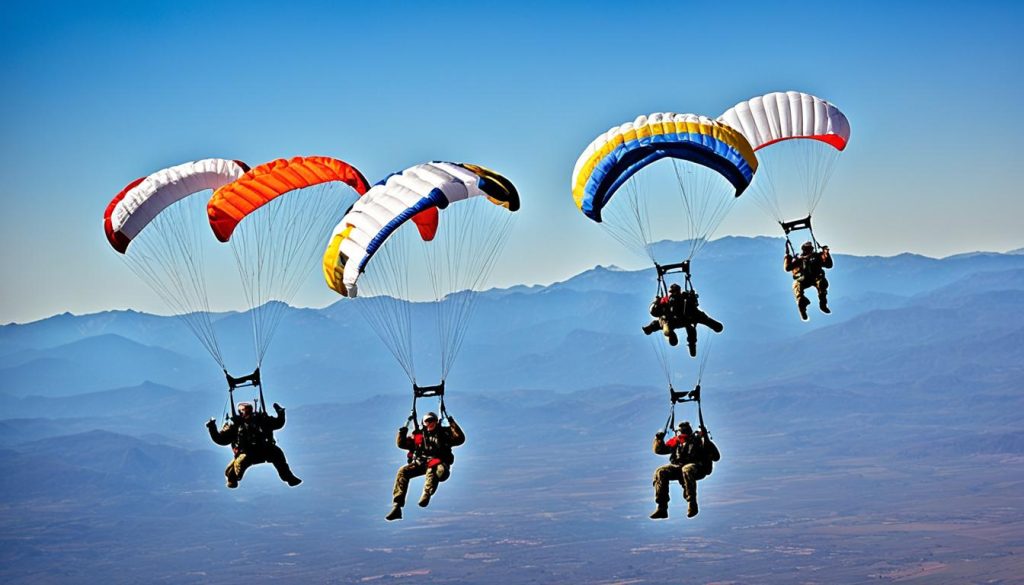
By understanding the various parachute design options and experimenting with different shapes, sizes, and configurations, skydivers can enhance their control and performance during advanced maneuvers.
Parachutes and Air Resistance
Parachutes rely on the principle of air resistance to control their descent. The large surface area of the canopy allows it to catch the air, creating drag that significantly slows down the parachute’s fall. By manipulating the weight, shape, and size of the parachute, skydivers can effectively control the amount and speed at which air is pushed out of the way.
When it comes to air resistance, wind plays a crucial role. It exerts more force on objects with broad, flat shapes, which is why parachute design adjustments can influence the amount of air resistance generated. This study of wind’s impact on object speed is known as aerodynamics.
During a parachute drop, it is important to find the right balance between air resistance and maneuverability. Experimenting with different variables, such as weight distribution and parachute shape, can aid in achieving freefall stabilization and optimal parachute control. By understanding the principles of air resistance, skydivers can enhance their parachute performance and ensure a safe and controlled descent.
Perfecting Parachute Landing
Achieving a perfect parachute landing requires precise navigation and control of the parachute. Skydivers must assess landing conditions and make an early decision on whether to execute a normal landing or a Parachute Landing Fall (PLF) technique. The PLF technique involves rolling the body to distribute the impact and protect vulnerable areas. It is important to choose the direction of the PLF based on obstacles and unevenness in the landing area.
During the PLF, the body makes contact with the ground in a specific order, starting with the balls of the feet and ending with the side of the back. Maintaining softness and coordination during the landing is crucial to absorbing the impact without tension. Practicing and mastering parachute landing techniques contribute to safer and more controlled landings.
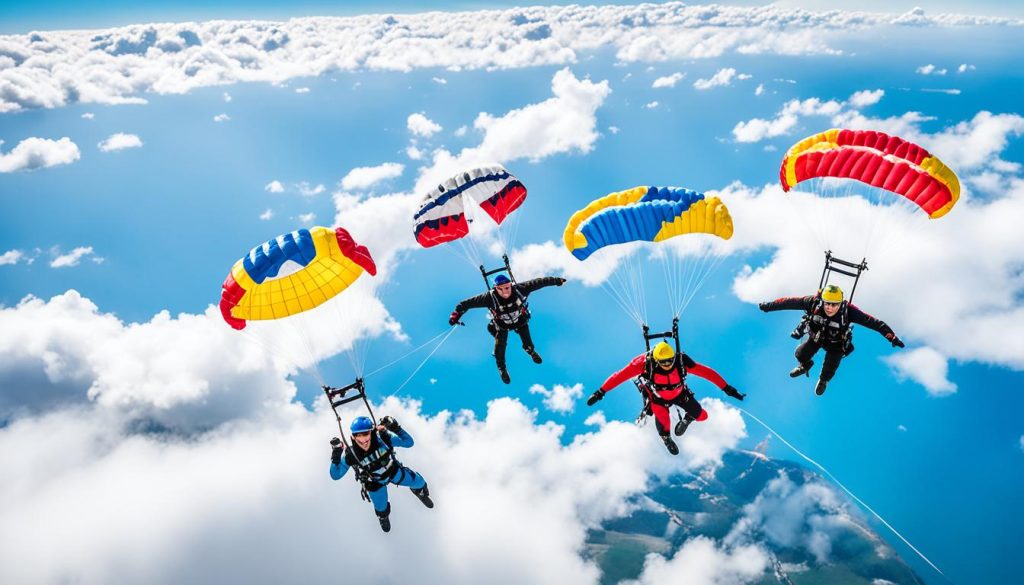
Improving Parachute Performance
To enhance parachute performance, continuous experimentation and modifications are necessary. This includes exploring different canopy designs, materials, and sizes. Adjusting the number of strings and incorporating small holes in the canopy can also affect the parachute’s performance. By dropping the parachute from various heights and timing its descent, skydivers can evaluate the effectiveness of different designs. Additionally, considering the weight and attachment of containers or payloads can influence how the parachute behaves. Through ongoing testing and improvements, skydivers can optimize their parachute performance to achieve desired results.
Parachute Design and Performance Factors
When looking to improve parachute performance, skydivers can focus on these key design and performance factors:
- Canopy design: Experimenting with different canopy shapes and sizes can impact how the parachute flies and maneuvers.
- Material selection: Exploring lightweight, durable materials can enhance the parachute’s efficiency and durability.
- String adjustments: Increasing or decreasing the number of strings can alter the parachute’s stability and responsiveness.
- Small holes in the canopy: Introducing small holes in the canopy can affect the parachute’s air resistance and descent characteristics.
- Weight and payload considerations: Attaching containers or payloads of different weights can influence the parachute’s performance and handling.
By experimenting with combinations of these factors, skydivers can fine-tune their parachute design to achieve optimal performance and control.
Optimizing Performance through Testing
Testing and evaluation are crucial for improving parachute performance. Skydivers can conduct controlled drops from varying heights and observe the parachute’s behavior. By noting factors such as speed, stability, and maneuverability during descent, skydivers can gather valuable insights into the effectiveness of different design modifications. Ongoing testing allows for adjustments and refinements to be made to enhance the parachute’s performance over time.
| Drop Height | Descent Speed | Parachute Behavior |
|---|---|---|
| 1000ft | Slow and steady | Stable descent with smooth flight |
| 3000ft | Rapid descent | High-speed descent with slight instability |
| 5000ft | Gradual descent | Consistent flight with precise control |
By analyzing data collected through testing, skydivers can fine-tune their parachute design and make informed adjustments to achieve desired performance characteristics.
“Continuous improvement is a vital aspect of achieving optimal parachute performance. Skydivers must embrace a mindset of experimentation and adaptability to push the boundaries of what their parachutes can achieve.”
– Experienced skydiver
By following parachute drop tips and actively engaging in advanced parachute maneuvers, skydivers can unlock greater precision, control, and safety during their skydiving experiences.
Conclusion
Perfecting parachute drop techniques requires a combination of factors, including a deep understanding of parachute design, proper landing techniques, and a commitment to continuous experimentation. Skydivers can enhance their control, precision, and safety during parachute drops by manipulating elements such as canopy design, weight, and shape. By carefully considering these factors, they can achieve advanced parachute maneuvers and master precision skydiving techniques.
One key technique that contributes to successful landings is the use of the Parachute Landing Fall (PLF) technique. By rolling their bodies to distribute the impact and protect vulnerable body parts, skydivers can ensure a safer landing. Executing a PLF involves a coordinated sequence of contact with the ground, starting with the balls of the feet, followed by the side of the calf, upper leg, hip/butt, and finally the side of the back. Maintaining softness and coordination during the landing is crucial to absorbing the impact without tension and maintaining control of the parachute.
Additionally, skydivers can improve their parachute drop techniques by constantly refining the design and performance of their parachutes. Experimenting with different canopy designs, sizes, and materials, as well as adjusting the number of strings and incorporating small holes, can optimize parachute functionality. By dropping the parachute from various heights and observing its descent, skydivers can gather valuable insights into the effectiveness of different designs. Furthermore, considering the weight and attachment of containers or payloads can further enhance parachute performance.
Overall, perfecting parachute drop techniques is an ongoing process that requires attention to detail and continuous improvement. By combining a comprehensive understanding of parachute design, proper landing techniques such as the PLF, and a commitment to experimentation, skydivers can achieve advanced maneuvers and experience the thrill of precision skydiving.


